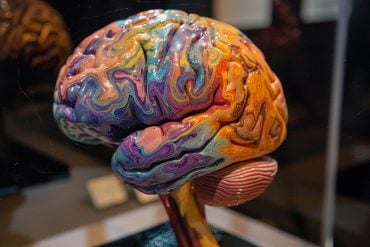A team of European scientists from the University Medical Center Hamburg-Eppendorf (UKE) and the Cologne Excellence Cluster on Cellular Stress Responses in Aging-Associated Diseases (CECAD) at the University of Cologne in Germany has taken an important step closer to understanding the root cause of age-related dementia.
In research involving both worms and mice, they have found that age-related dementia is likely the result of a declining ability of neurons to dispose of unwanted aggregated proteins. As protein disposal becomes significantly less efficient with increasing age, the buildup of these unwanted proteins ultimately leads to the development and progression of dementia. This research appears in the journal Genetics.
“By studying disease progression in dementia, specifically by focusing on mechanisms neurons use to dispose of unwanted proteins, we show how these are interconnected and how these mechanisms deteriorate over time,” said Markus Glatzel, M.D., a researcher involved in the work from the Institute of Neuropathology at UKE in Hamburg, Germany. “This gives us a better understanding as to why dementias affect older persons; the ultimate aim is to use these insights to devise novel therapies to restore the full capacity of protein disposal in aged neurons.”

To make this discovery, scientists carried out their experiments in both worm and mouse models that had a genetically-determined dementia in which the disease was caused by protein accumulation in neurons. In the worm model, researchers in the lab of Thorsten Hoppe, Ph.D., from the CECAD Cluster of Excellence could inactivate distinct routes used for the disposal of the unwanted proteins. Results provided valuable insight into the mechanisms that neurons use to cope with protein accumulation. These pathways were then assessed in young and aged mice. This study provides an explanation of why dementias exponentially increase with age. Additionally, neuron protein disposal methods may offer a therapeutic target for the development of drugs to treat and/or prevent dementias.
“This is an exciting study that helps us understand what’s going wrong at a cellular level in age-related dementias,” said Mark Johnston, Ph.D., Editor-in-Chief of the journal Genetics. “This research holds possibilities for future identification of substances that can prevent, stop, or reverse this cellular malfunction in humans.”
Notes about this dementia research
This work is supported by grants of the Deutsche Forschungsgemeinschaft (especially the FOR885 to M.G. and T.H., the Cologne Excellence Cluster on Cellular Stress Responses in Aging-Associated Diseases (CECAD) to T.H. and GRK1459 to M.G.), the Medical Research Council (UK) to D.L., the Hans und Ilse Breuer Foundation to S.L., the Leibniz Center Infection Graduate School (Model systems for infectious diseases), and the Landesexzellenzinitiative of Hamburg (SDI-LEXI) to M.G.
Contact: Press Office – Genetics Society of America
Source: Genetics Society of America press release
Image Source: The image is in the public domain.
Original Research: Abstract for “A Novel Interaction Between Aging and ER Overload in a Protein Conformational Dementia” by Angela Schipanski, Sascha Lange, Alexandra Segref, Aljona Gutschmidt, David A. Lomas, Elena Miranda, Michaela Schweizer, Thorsten Hoppe and Markus Glatzel in Genetics. Published online March 1 2013 doi:10.1534/genetics.112.149088







